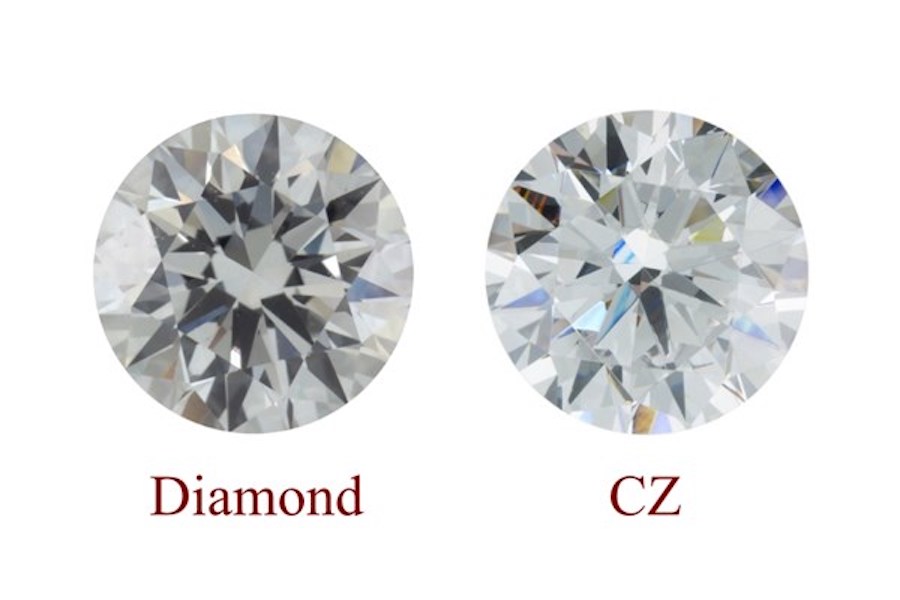
Simulants, also known as imitations, refer to any materials (natural or man-made) that closely resemble natural gemstones. They have the same appearance but do not have the same chemical, physical, and optical properties of natural gemstones. Simulants are, of course, less expensive than the real thing. By the law, it is required to fully disclose to the consumer if the gemstones are simulants. We at Riginov offer our customers only natural gemstones and do not recommend purchasing any simulants. Please note that simulants are not to be compared with synthetics or treated gemstones.
Diamonds Simulants
Diamonds simulants may look like natural diamonds, but they are completely unrelated to the diamond atomic level. They allow consumers to enjoy the flash and dazzle of diamonds, but no matter how convincing the illusion, they have total different characteristics that can be identified by a trained gemologist. GIA tests every stone to verify if it is a diamond. GIA does not issue grading reports for simulants. Common diamond simulants are glass, synthetic cubic zirconia, and synthetic moissanite.
The most common simulants are:
Glass
Glass is the oldest known form of gemstone simulant that is still used today. Since glass can be easily manufactured in virtually any color, it is a popular simulant for almost any gemstones.
Plastic
Plastic is often used to imitate gemstones in inexpensive fashion jewelry. However, this modern man-made substance is a convincing alternative for organic gems like amber, pearl, and coral, or aggregate materials like jade, turquoise, and lapis lazuli.
Synthetic Cubic Zirconia
Synthetic Cubic Zirconia was introduced in 1976 and has remained the most geologically and economically significant competitor for diamonds since then. It comes in a variety of different colors and is a convincing alternative for many gemstones. Cubic Zirconia is in no way related to Zircon, while the name is similar they are completely different minerals. Because of its low cost and durability, it is the most common and widely used simulant for gemstones.
Synthetic Moissanite
Synthetic moissanite was introduced in the late 1990s as a diamond simulant, and is closer to the natural diamond in overall appearance than any previous diamond simulant. Today it is most often sold as a gemstone in its own right.
Synthetic Spinel
Synthetic Spinel is a tough material, and it comes in a variety of different colors. Commonly used as a simulant for sapphires, aquamarine or peridot.
Synthetic Rutile, Synthetic Titanate, YAG, and GGG
All these minerals are man-made and do not have a natural counterpart. Their primary use is being a simulant for diamonds.
Assembled Stones
Assembled, also known as composite stones, are the result of two or more separate pieces of material (natural or man-made) glued or fused together in the form of a faceted gemstone. Doublet – a doublet consists of two joined segments. Triplet – a triplet has three segments or two segments separated by a layer of colored cement.